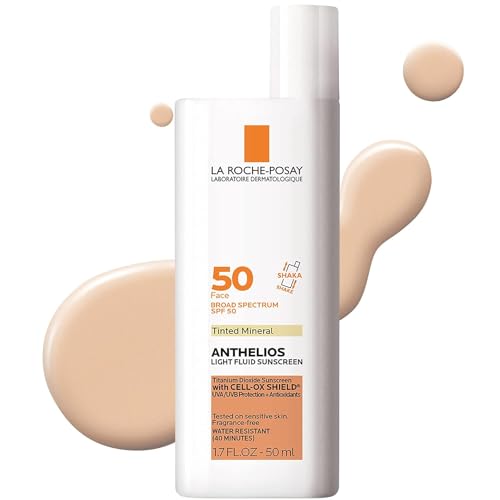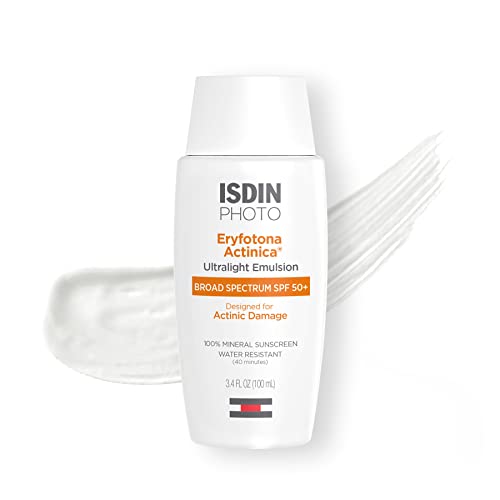We all know that protecting our skin from the sun is crucial, and it becomes even more vital during the teenage years. That’s when habits form, and we lay the groundwork for healthy skin throughout our lives.
Unfortunately, not every sunscreen is created equal—a lot of us learn this the hard way. We need products that shield us from the harsh effects of the sun without causing other issues like breakouts or irritation.
More from Glowing Gorgeous: Find out here the Best Silicone-Free Moisturizers And Why Do You Care
Teen Vogue’s savvy editors, alongside experienced dermatologists, are always on the lookout for the best sunscreens that will do the job for teens. We’re not just looking for any kind of sunscreen; we’re searching for the ones with skincare perks, those that are packed with nourishing ingredients such as hyaluronic acid and vitamin B5.
Given that the Skin Cancer Foundation has stated that one in five Americans will develop skin cancer by age 70, the significance of sunscreen can’t be overstated. If that’s not sobering enough, let me throw this out there: how do we get teenagers to see sunscreen application as just as non-negotiable as brushing their teeth?
Glowing First Glimpse:
- Mineral-based sunscreens with SPF 30 or higher are ideal for teenagers.
- Look for sunscreens with added skincare benefits like hydration and non-comedogenic properties.
- Motivate teenagers to use sunscreen by emphasizing its role in preventing premature aging and skin damage.
- Consistent application and reapplication are key to effective sun protection.
Understanding Sunscreen and SPF
What SPF Should Teens Use?
SPF, standing for Sun Protection Factor, is basically a measure of how well a sunscreen will protect your skin from UVB rays, the kind of radiation that causes sunburn and contributes to skin cancer. For teenagers, it’s crucial to use a sunscreen with an SPF of at least 30, which blocks around 97% of UVB rays.
While no sunscreen can block 100% of UV rays, higher SPF numbers do offer more protection, which can be particularly beneficial for prolonged outdoor activities. The number 1 dermatologist recommended sunscreen is often one with broad-spectrum coverage, high SPF, and water resistance.
For instance, La Roche-Posay Anthelios Melt-in Milk Sunscreen SPF 60 is frequently recommended.
La Roche-Posay Anthelios Melt-in Milk Sunscreen comes with an SPF of 60, assuring superior protection against harmful sun rays. What makes this sunscreen a superb pick, especially for teenagers, is its broad-spectrum coverage and the inclusion of a powerful antioxidant complex to help protect the skin from free radicals produced by UV rays. Plus, it’s a non-greasy formula that’s suitable for sensitive skin, making it ideal for everyday use without causing irritation.
Let’s clear up some common misconceptions: SPF above 30 doesn’t mean it’s unnecessary or too strong; these higher levels offer additional security for your skin, though they still need to be reapplied regularly for effective protection.
Different Types of Sunscreen
When exploring the sunscreen aisle, you’ll find mainly two types – chemical and mineral. Chemical sunscreens absorb UV rays, transform them into heat, and release them from the skin. They tend to be thinner and can be applied without leaving a white residue, making them user-friendly for many.
In contrast, mineral sunscreens, containing ingredients like zinc oxide or titanium dioxide, sit on top of the skin to physically block and scatter the UV rays away. For teens, mineral-based sunscreens are often recommended, such as the praised by Dr. Husain, because they’re less likely to cause irritation for those with sensitive or acne-prone skin.
Zinc-based sunscreens like CeraVe Hydrating Mineral Sunscreen SPF 50 provide a heavy-duty barrier without the common chemical irritants. What’s noteworthy about CeraVe’s formula is not just the mineral-based protection but also the inclusion of ceramides and niacinamide, which nourish and support the skin’s natural barrier, making it tailor-made for young, potentially sensitive skin.
More from Glowing Gorgeous: Find out here Hyram’s Recommended Face Sunscreens For The Summer
Incorporating skincare ingredients is another beneficial move for teenage skin. Look for sunscreens with added hydrators or nutrients to help maintain skin health while also protecting from the sun.
Best Practices for Sunscreen Application
A teenager should apply about an ounce of sunscreen to cover their entire body. That’s roughly the amount to fill a shot glass, which can seem like quite a bit, but it ensures thorough coverage.
Reapplication is key, too – every two hours, or immediately after swimming or excessive sweating. For maximum protection, sunscreen should be applied to dry skin 15 minutes before sun exposure and spread evenly to all exposed areas. Be meticulous: include the hairline, top of feet, ears, and behind the knees.
Neutrogena Ultra Sheer Dry-Touch Sunscreen SPF 70 is one of the easiest sunscreens for teenagers to apply with consistency. This product boasts Dry-Touch technology, ensuring a lightweight, non-shiny finish. Its high SPF and durability make it ideal for those who are active and need reliable protection that won’t break down during sports or swimming.
Top Recommended Sunscreens for Teenagers
Best Daily Sunscreen for Teens
We all know that keeping our skin safe from the sun is critical, especially during those teenage years when our skin is still adapting to environmental changes. Let me introduce you to Aveeno Protect + Hydrate Moisturizing Sunscreen Lotion with Broad Spectrum SPF 60.
This product not only provides excellent protection against harmful rays but also infuses your skin with hydration throughout the day.
Aveeno is a solid choice for young skin, offering a combination of powerful SPF 60 and oatmeal-enriched moisturizers that keep skin smooth and supple. It’s a convenient go-to for both sun defense and daily skin care in one bottle.
And let’s not forget about COSRX Aloe Soothing Sun Cream, an innovative sunscreen that transforms your daily skin routine with a burst of moisture.
The COSRX Aloe cream boasts a cooling effect, courtesy of the aloe vera, making it suitable for even the most sensitive or breakout-prone skin. It’s a dynamic product that balances sun protection and skin nurturing seamlessly.
Best Face Sunscreen for Teens
Moving on to face-specific sunscreens, you’ll want a product that can pull double duty – offer protection and enhance your natural glow. La-Roche Posay offers a tinted mineral sunscreen that delivers on both.
Apart from its broad-spectrum proficiency, it subtly evens out your skin tone, adding that ‘no makeup’ natural look.
Additionally, Colorescience Total Protection Face Shield SPF 50 is another fantastic option that offers a dewy finish without any harmful chemicals. With its hydrating properties, it’s like giving your face a drink of water while protecting it from the sun.
Lastly, let’s talk about ISDIN Eryfotona Actinica Zinc Oxide and 100% Mineral Sunscreen Broad Spectrum SPF 50+. These products use zinc oxide to provide a clear finish, so you don’t have to worry about that white residue left by many other sunscreens. They’re ideal for anyone looking for a product that feels like you have nothing on your skin, thanks to their matte and practically invisible finish.
Special Considerations for Acne-Prone and Sensitive Skin
I find it extremely important to discuss the unique needs of acne-prone and sensitive teenage skin. Sunscreens like DRMTLGY’s formulation are specifically designed to avoid aggravating your skin.
What makes this sunscreen stand out is its non-comedogenic formula, meaning it won’t clog pores, and its ingredients are chosen for their gentleness on sensitive skin. The importance of picking a product that won’t cause breakouts or irritation can’t be overstated – it’s crucial for maintaining not just the health of your skin, but also your confidence as you go about your day.
Encouraging Teenagers to Wear Sunscreen
Motivating Factors for Teens
I trust insights from the Journal of the American Academy of Dermatology when it comes to teen behavior and sunscreen use. Studies suggest that teenagers are more motivated to use sunscreen when they understand its cosmetic benefits—such as preventing wrinkles and age spots—rather than just its health benefits. This presents a clear path for strategies aimed at making sunscreen application a daily habit.
Here’s what I know from experience and research: if we want teens to regularly apply sunscreen, we should highlight how it can preserve their youthful appearance. We’re talking about cosmetic perks that resonate with the teenage concern for present-day aesthetics. I’ve found that when teens are aware that unprotected sun exposure can lead to premature signs of aging, they’re more inclined to reach for the bottle as part of their morning routine. It’s about making the connection between the action – applying sunscreen – and the immediate personal benefits it offers.
Engaging Teenagers in Skin Care Routines
So, how can parents and guardians effectively broach the topic of sun protection? Conveying the importance of sunscreen to teenagers can be as simple as initiating an open dialogue that connects skin care with overall health and self-care. It’s crucial to move beyond lectures and foster a collaborative conversation that empowers teens to take charge of their skin health.
I’ve seen creative ways to demonstrate skin damage, such as comparing the outer surface and under-surface of an adult’s arm. This visual evidence of sun damage can be a powerful tool. When teens see firsthand the long-term effects of UV exposure – rougher, less even, and more pigmented outer arm surfaces against the more protected under-arm skin – it becomes more than an abstract warning; it becomes real.
By equipping teenagers with this knowledge and understanding, we increase the chances of them incorporating sun protection into their daily routines. As we continue to analyze the most effective approaches, the aim remains to support teens in making informed decisions for their skin health, adding sunscreen to their day with the same regularity as brushing their teeth or combing their hair.
Common Questions About Sunscreen for Teenagers
When we talk about skincare for teens, sunscreen inevitably becomes a central topic of conversation.
Is sunscreen beneficial for a 15-year-old? Absolutely. When it comes to protection against the sun’s harmful ultraviolet radiation, age is irrelevant. Puberty brings many changes, including increased sensitivity of the skin, making teenagers particularly susceptible to sunburn and long-term damage.
For 12-year-olds as well, sunscreen isn’t just recommended; it’s crucial. Children’s skin can be even more delicate than that of older teens and adults, which means they’re also at risk for sunburns and other skin damage. At this developmental stage, wearing sunscreen can lay the foundation for a lifelong habit of sun protection, helping to prevent issues like early skin aging and increasing the risk of skin cancer later in life.
It’s not just about slathering on any sunscreen, thougLa Roche-Posay Anthelios Melt-in Milk Body & Face Sunscreen Lotion Broad Spectrum SPF 100ucts that provide protection against both UVA rays, which age the skin, and UVB rays, which burn it. These rays are not selective; they affect all skin types and all ages.
One practical option that ticks these boxes is the Neutrogena Ultra Sheer Dry-Touch Sunscreen SPF 100.
This sunscreen is a superb option for young skin, as it provides a high SPF level to help shield against sunburns while feeling light and comfortable on the skin – a must for picky teenagers. Its non-greasy formula means it won’t clog pores, which is critical for skin that might already be dealing with acne or other blemishes. Coupled with its lightweight texture, it ensures that the sunscreen adheres to the skin without feeling heavy or causing excessive shininess.
Remember, the benefits of sunscreen are not limited to preventing burns; they extend to minimizing the risks of developing skin cancer and preventing premature aging of the skin. Continuous education and transparent communication about these benefits will encourage a healthy mindset toward sunscreen use amongst teenagers.
Bottom Line
We’ve covered a lot about protecting teenage skin from the sun’s harsh effects, noting how critical it is to pick the right sunscreen. It’s not just about slathering on any cream; it’s about choosing a shield that’s going to prevent sunburn, minimize skin damage, and potentially ward off skin cancer down the line.
But beyond that, it’s the education surrounding sun safety that needs to be stressed. We need to instill in teenagers the significance of making sunscreen application a non-negotiable part of their daily routine. It’s important we keep talking to teens about the science of skin care and the reasons why we’re harping on about UV protection.
It might seem like overkill to keep mentioning broad-spectrum sunscreens, water resistance, SPF ratings, and the need for consistent reapplication, but the clarity of this message can save skins and lives. And let’s not ignore the allure of products that go beyond protection.
Teenagers are more likely to use sunscreens that feel great and maybe even offer extra skin care perks like hydration or acne control. Encouraging teenagers to find sunscreens that not only feel good on their skin but also provide broad-spectrum protection can make all the difference in forming life-long sun-protection habits.
In closing, let’s all remember that while the sun can be our friend, giving us that essential vitamin D, it can also be harsh on our skin. It’s our responsibility to protect the youngest among us, teaching them the ways of wise sun care so they can enjoy healthy skin throughout their lives. The choices they make now have a lasting impact, and with the right approach, they can face their future with bright and healthy smiles, unmarred by the ravages of sun damage.
To maintain the reliability of my content, I refer to scholarly articles, reputable academic sources, and the perspectives of certified healthcare professionals. – American Academy of Dermatology – Consumer Reports – Mayo Clinic – Skin Cancer Foundation


 La Roche-Posay Anthelios Melt-In Milk Body & Face Sunscreen SPF 60, Oil Free...
La Roche-Posay Anthelios Melt-In Milk Body & Face Sunscreen SPF 60, Oil Free... CeraVe 100% Mineral Sunscreen SPF 50 | Face Sunscreen with Zinc Oxide & Titanium...
CeraVe 100% Mineral Sunscreen SPF 50 | Face Sunscreen with Zinc Oxide & Titanium... Neutrogena Ultra Sheer Dry-Touch Water Resistant and Non-Greasy Sunscreen Lotion...
Neutrogena Ultra Sheer Dry-Touch Water Resistant and Non-Greasy Sunscreen Lotion... Aveeno Protect + Hydrate Moisturizing Face Sunscreen Lotion With Broad Spectrum...
Aveeno Protect + Hydrate Moisturizing Face Sunscreen Lotion With Broad Spectrum... Aloe Soothing Sun Cream SPF 50 PA+++ (50ml, 1.76Floz)
Aloe Soothing Sun Cream SPF 50 PA+++ (50ml, 1.76Floz) La Roche-Posay Anthelios Tinted Sunscreen SPF 50, Ultra-Light Fluid Broad...
La Roche-Posay Anthelios Tinted Sunscreen SPF 50, Ultra-Light Fluid Broad... Colorescience Sunforgettable Total Protection Face Shield Glow SPF 50, Glow, 1.8...
Colorescience Sunforgettable Total Protection Face Shield Glow SPF 50, Glow, 1.8... ISDIN Eryfotona Actinica Zinc Oxide and 100% Mineral Sunscreen Broad Spectrum...
ISDIN Eryfotona Actinica Zinc Oxide and 100% Mineral Sunscreen Broad Spectrum... DRMTLGY Anti Aging Clear Face Sunscreen and Facial Moisturizer with Broad...
DRMTLGY Anti Aging Clear Face Sunscreen and Facial Moisturizer with Broad... La Roche-Posay Anthelios Melt-in Milk Body & Face Sunscreen Lotion Broad...
La Roche-Posay Anthelios Melt-in Milk Body & Face Sunscreen Lotion Broad...
 innisfree Daily UV Defense Sunscreen Broad Spectrum SPF 36 Face Lotion, 1.69 Fl...
innisfree Daily UV Defense Sunscreen Broad Spectrum SPF 36 Face Lotion, 1.69 Fl...
Comments